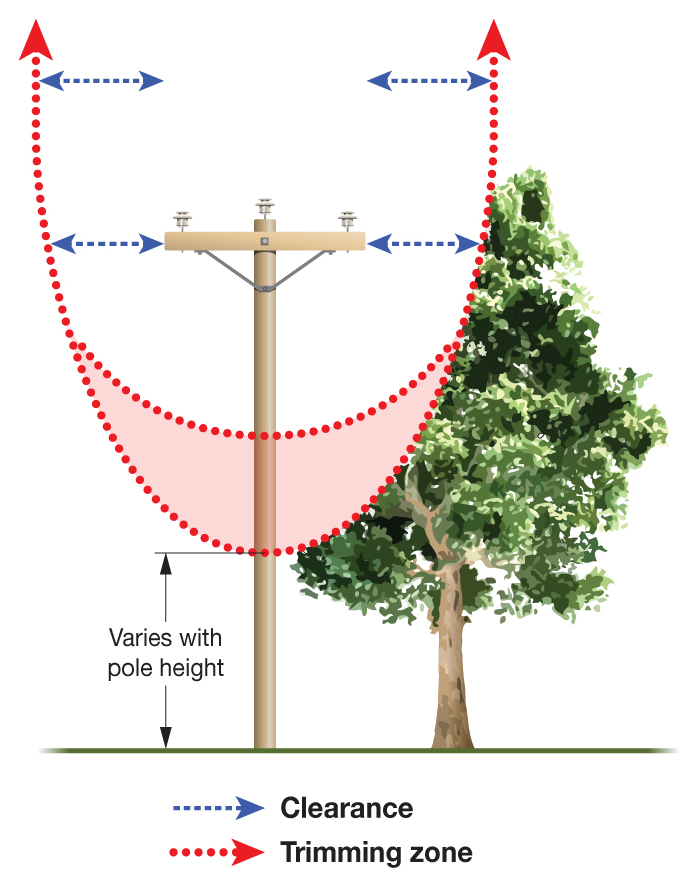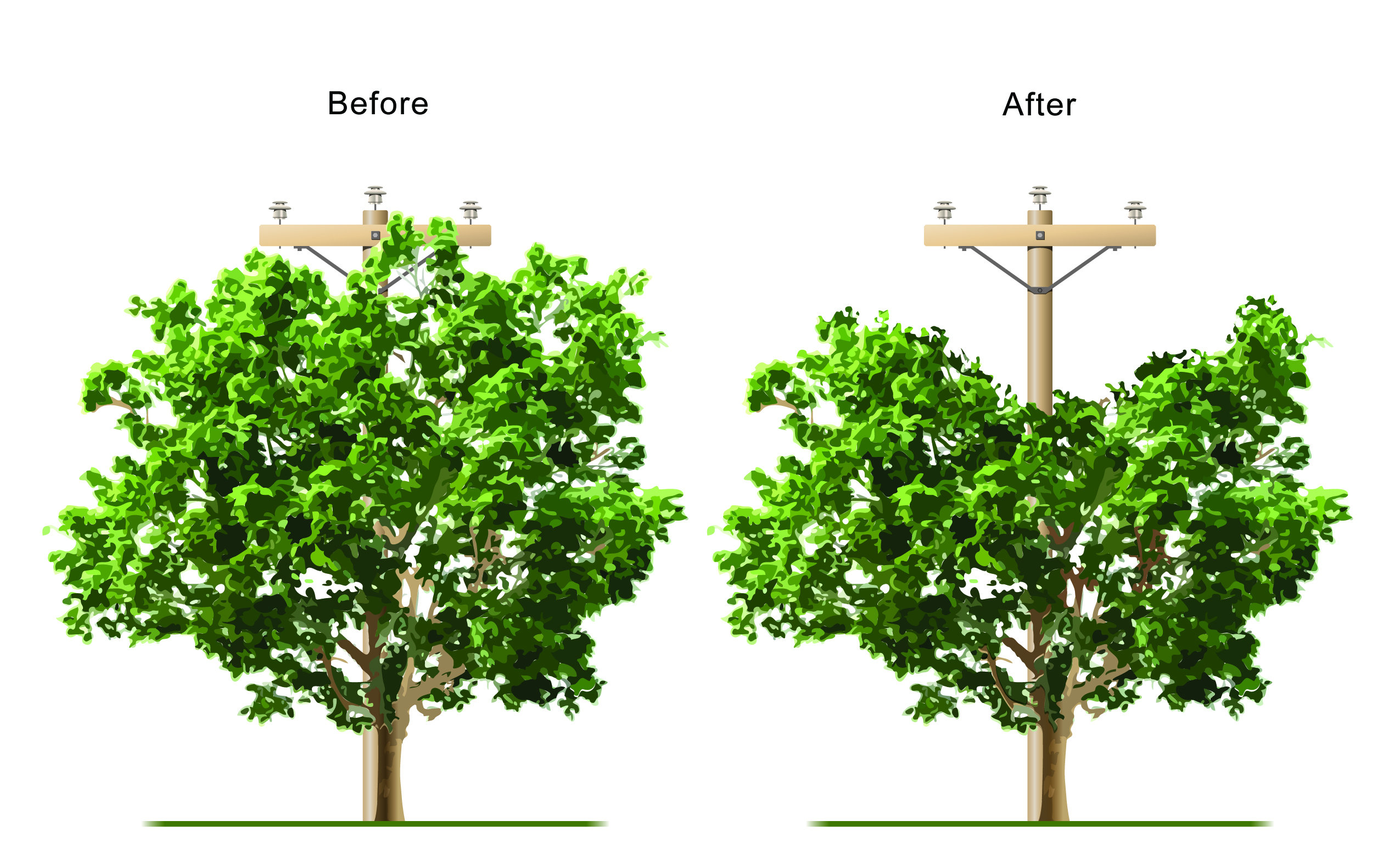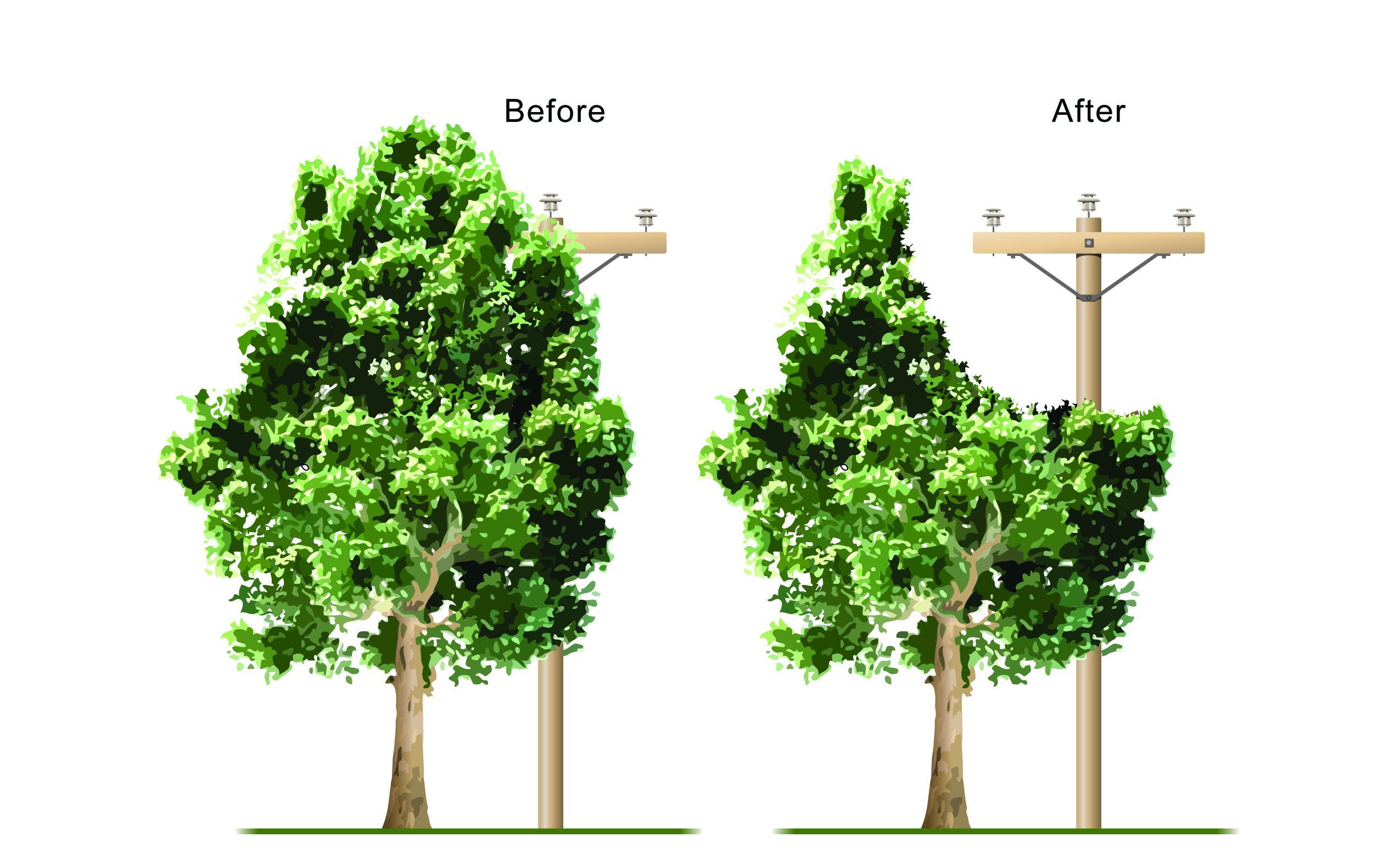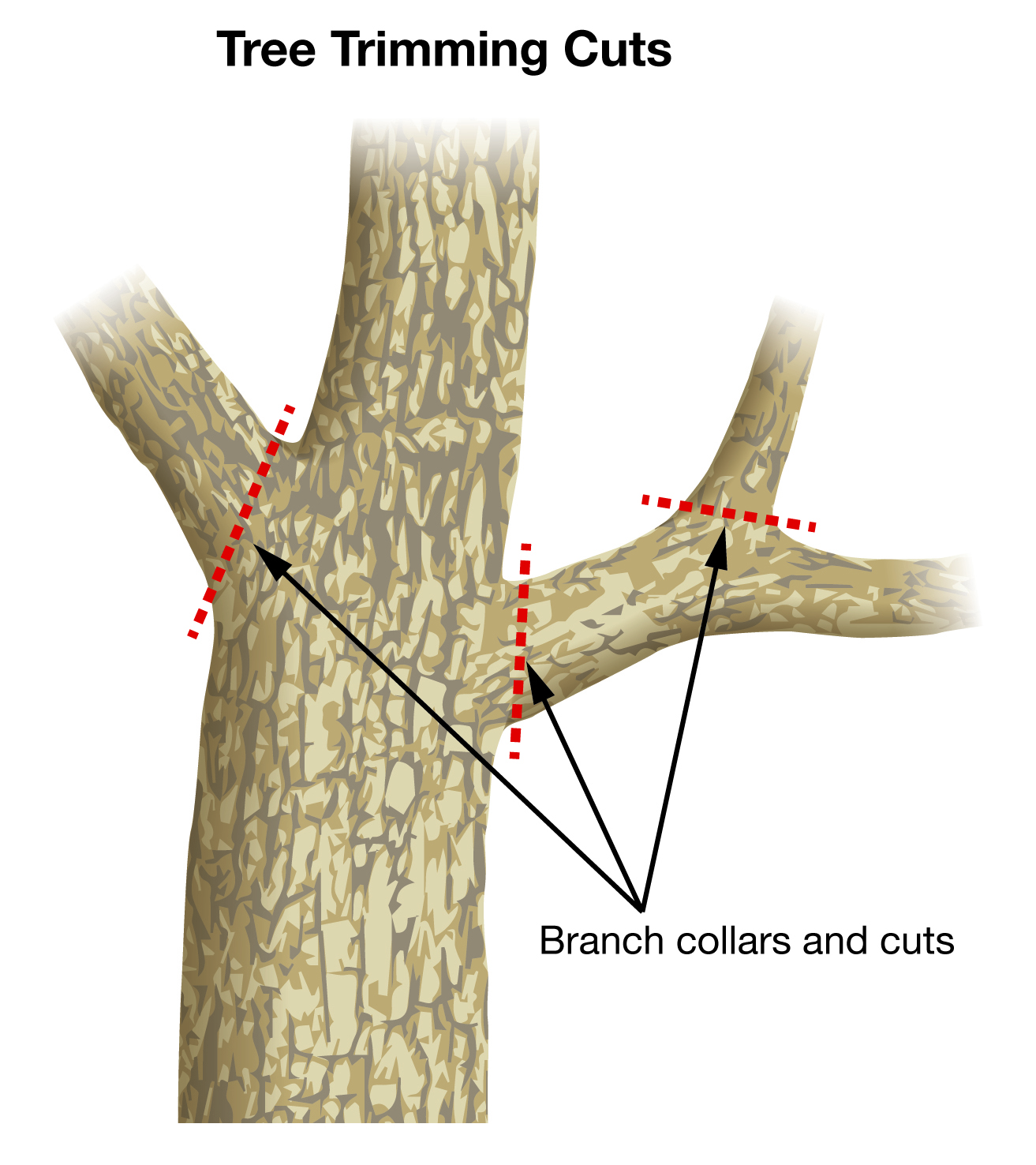In order to balance the benefits of a healthy tree canopy with the needs for public safety and electricity supply reliability, Hydro Ottawa conducts a Tree Trimming Program throughout the year.
All crews involved in the Tree Trimming Program follow industry best practices, receive extensive training in proper line clearing techniques, and are regularly updated on electrical awareness.
Our tree trimming crews are trained in proper pruning techniques and do their best to redirect growth away from the power lines while attempting to protect the health of the tree. Every effort will be made to minimize the impact to the trees. However, we must achieve required clearance objectives.
Our experts evaluate the landscape around the electrical equipment and the natural structure of the tree before any work begins. The individual characteristics of each tree are also taken into consideration.
Directional trimming is used to encourage growth away from conductors – see “V” trim and “C” trim illustrations below.
Our crews adhere to the same professional standards as other arborists and follow similar tree trimming cuts.
These experts make every attempt to trim sufficient clearance to reduce electricity risk to the public and support reliability. However, each tree is different.
The table below is from the Infrastructure Health and Safety Association's Line Clearing Operations Safe Practice Guide. It shows the growth rate of various tree species, and the required clearance for each.
Clearance distance is increased for trees that grow very quickly to ensure they remain outside the tree trimming zone for the following 3 years.
Tree Species: Growth Rates and Clearance Requirements
Very Fast Growth 12’ or 3.7 m of clearance | Fast Growth 11’ or 3.4 m of clearance | Medium Growth 9’ or 2.7 m of clearance | Slow Growth 8’ or 2.4 m of clearance |
| Carolina Poplar | Willow | Tulip | Sugar Maple |
| Cottonwood | Locust | Black Cherry | Horse |
| Lombardy | Manitoba Maple | Aspen | Chestnut |
| Red Pine | Hickory | ||
| Elm | White Oak | ||
| Red Maple | Beech | ||
| White Pine | Balsam Fir | ||
| Sycamore | White Spruce | ||
| Scotch Pine | Black Spruce | ||
| Birch | Hemlock | ||
| Jack Pine | White Cedar | ||
| Red Oak | |||
| Basswood | |||
| Walnut | |||
| Ash | |||
| Larch | |||
| Norway Spruce |



